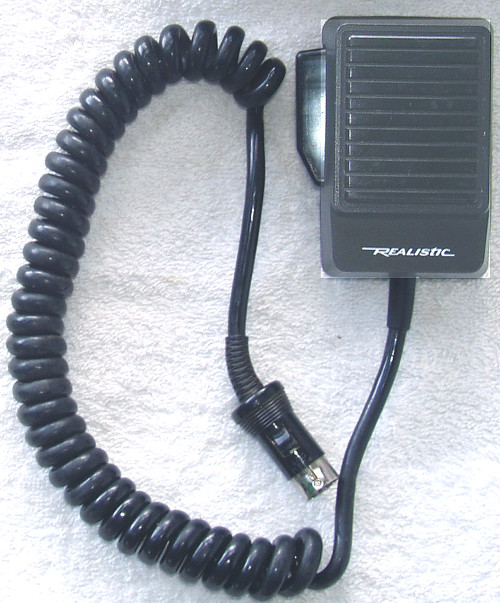HISTORY:
PYE, well there's a name that was very well known in communications circles many moons ago. I would estimate this particular unit comes from around the late 1980's to early 1990's so it's old but not vintage.
I have had this "special purpose" communications portable microphone/speaker for a LONG time but never found a use for it, so it's now looking for a new home either as it is or it could easily be modified by the new owner.
Please read the description below to get an idea of what this speaker/microphone is all about.
PYE PORTABLE Speaker - Microphone
Model: unknown
Estimated year of release late 1980's ~ early 1990's
Rugged construction and I suspect it was originally intended for law enforcement or perhaps aviation. Law enforcement? I have seen British Philips comms equipment married with very similar looking PYE speaker microphones for the officers on the beat. Why aviation? I also recently found a RACAL headset intended for the aviation industry with exactly the same plug fitting and these are no ordinary plugs! Might be a coincidence but ....
COSMETIC CONDITION:
Very good overall and in fact the only thing I noticed is a small crack in the top section of the speaker/microphone. This crack is barely visible and does NOT affect the sturdiness or use of the equipment.
TESTING:
Ok, so let's dig deeper into the strange PYE Speaker/Microphone!
Starting at the most important part, the speaker microphone itself.
The casing is a very tough plastic, two halves which separate by removing 4x chrome plated bolts.
Inside there are only 2 items, a 50cm miniature loudspeaker and a push microswitch.
The loudspeaker is a strange one, its a Hakutone Model: 50P15 200mW Made in Japan and the impedance is 60 Ohms! That was a surprise, I would normally expect anywhere from 8 Ohms up to around 32 Ohms for this type of element.
I DC resistance checked the loudspeaker, all good, it reads 59.5 Ohm DC resistance
The only other component is the side PUSH switch, SPST (Push ON Release Off). It is marked 202/12/140 5/250 ~ and I believe the first group of numbers is the part number, the second numbers being the voltage and current rating.
NOWHERE on the case or inside the case is there any indication of a model number.
The curly cord appears to have 5 conductors (solid core - also unexpected) and a shield. Two of the conductors are not used at all. They are cut at the point of entry, I do not know if this is the design or someone over the years cut those wires.
One conductor (Red) goes from the curly cord point of entry directly to one side of the loudspeaker. No other wires from this loudspeaker point, just the Red wire,
Another conductor (Black) goes from the point of entry to one side of the microswitch, and also it is here that a green wire goes up to the other side of the loudspeaker.
So we have access to the loudspeaker across the Red & Black wires (tested from the plug)
Now it gets interesting, the third active conductor in the curly cord (White) goes to the other side of the microswitch. This effectively means that when the microswitch is pushed (switch closed) the white wire and black wire are joined together or the connected equipment can now "see" the speaker/microphone across Red and Black OR White.
I assume that the connected equipment uses this White wire as a microphone audio input, the source is the loudspeaker being used as a microphone instead of a loudspeaker. That's what I think anyway, nothing else makes much sense otherwise.
CURIOUS NOTE: On either side of the curly cord point of entry are two small holes (6mm diameter) cut into the case (original holes) with metal filters across them. I have seen these in old special purpose audio microphones but never in portable speaker/microphones before. I thought that perhaps a microphone element of some type used to be situated at this location but there are no securing points at all - it doesn't look as though anything was there before, just these two small "breathing" holes.
The top section of the case (which provides open access for the sound waves from the user to the loudspeaker) has a thin film material protecting the loudspeaker from user "spit and dribbles" contaminating the loudspeaker.
This top section is also tightly sealed with a rubber sealing gasket.
On the rear of the speaker/microphone is a very solid (it is never going to break!) metal lapel style clip. It looks very much like solid brushed aluminium. This clip rotates through 360 to suit the user requirements.
Next is the curly cord. It is in great shape, really really good - no splitting and no twists or turns. It is very HEAVY DUTY and weighs a lot more than a "normal" curly cord. As mentioned above, it appears to have 5 conductors and a shield. If this speaker/microphone was being "deconstructed" just this curly cord alone makes it worthwhile.
Finally there is the connector. It is identical to that which I saw fitted to the RACAL equipment I had i.e it looks very much like LEMO product (Germany), very robust and well constructed all metal connector. It has 5 male gold plated pins in a circular pattern similar to the well known DIN standard plug but smaller.
All up the weight of the complete assembly is 275g - mainly due to the loudspeaker, the metal clip and the heavy curly cord.
Just to double-check, I ran low level audio up from the plug to ensure the loudspeaker is working fine - it is.
So that's about it, plenty of information so you can judge if you can do something with this speaker/microphone.


















